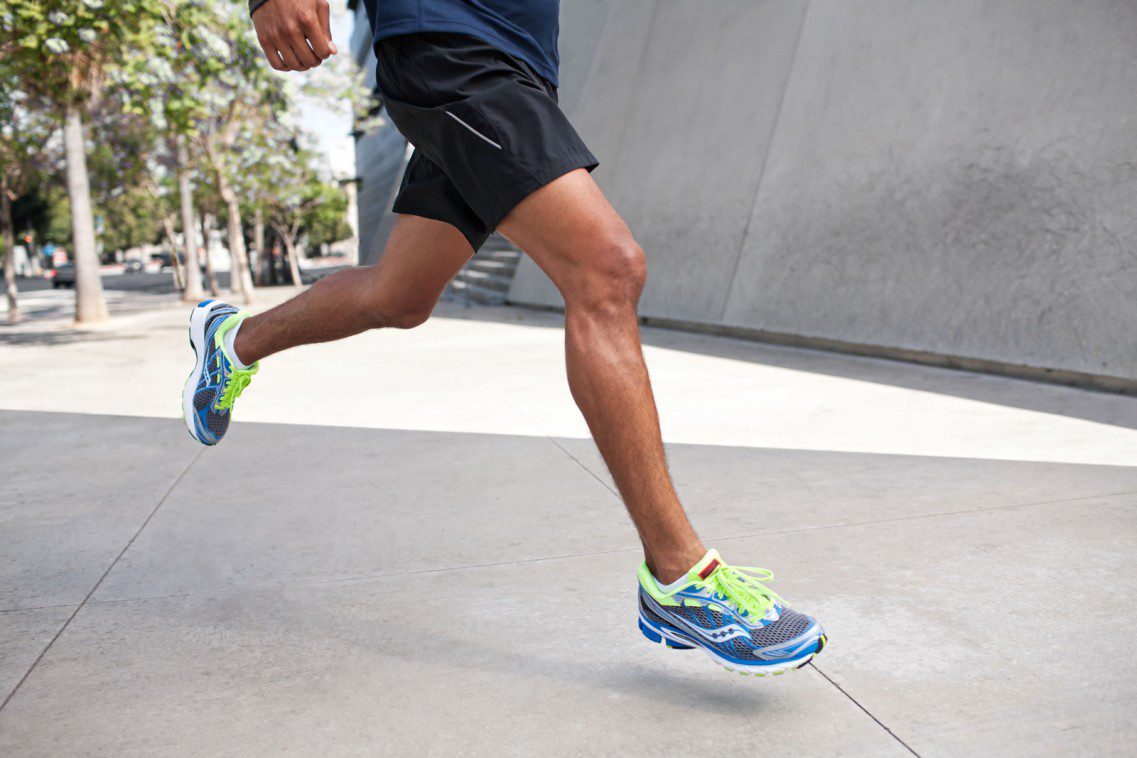Do this to improve your running form in seconds
Use this quick check-in to run more efficiently right now

If you’re looking to improve your running form, you’ll find no shortage of information. Entire books devoted to proper footstrike, gait analysis sessions and shoes promising to fix your bad habits are all popular (and expensive). Insert a minute focused on form into your training sessions regularly, and you’ll soon be running more smoothly by habit. Your natural form will become more loose and efficient, with minimal effort or cost. Here’s a quick rundown on how to check and improve your form in under 60 seconds.
Relax
It sounds simple, but it can be tricky, especially if you’re running at a challenging pace or experiencing life stress. Both will carry over to tension in your body during a run, a common form-destroyer. If you’ve ever ended a running workout and discovered that your arms and shoulders were sore, you’ve fallen prey to this common issue. By taking a moment to consciously relax your face, drop your shoulders and give your arms a shake-out, you can release any tight spots and give yourself a reset.
TIP OF THE DAY: We all have a natural form that should work best for us. Finding it is difficult. Keep running and you will find form down the road. #RunWithHal pic.twitter.com/dpM5xUMT0S
— Hal Higdon (@higdonmarathon) June 11, 2022
Don’t lean too far forward, or back
When fatigue sets in, it’s easy to stop paying attention to the way you’re carrying yourself. At the very end of ultras, you can usually see a few people coming in with “the lean,” an exhausted-looking forward slant. After you’ve shaken out your arms and relaxed your face, check in with your carriage. You might find it most comfortable to lean slightly forward while running: that’s fine, as long as you aren’t compromising your ability to breathe easily. If you find yourself overstriding, or your feet are connecting with the ground in front of your body, you need to adjust. Imagine the crown of your head reaching skyward, or envision yourself as a puppet with a piece of string stretching up through the top of your head. Keeping your gaze focused forward rather than down can help you find your natural running stride.

Breathe deeply
Using your breath as a tool can take some practice, but simply taking a couple of deep breaths improves your oxygen intake immediately. If you’ve ever tried yoga, you are probably familiar with “belly breathing” or diaphragmatic breathing: inhale through the nose while expanding your abdomen, then exhale deeply through your nose or mouth. Deep breathing will help your body relax, and with a bit of experience, you’ll find yourself belly-breathing naturally, even in hard runs and races. If you notice breathing deeply is a challenge during your one-minute form check, try adding a few minutes of belly-breathing practice before or after your run.


